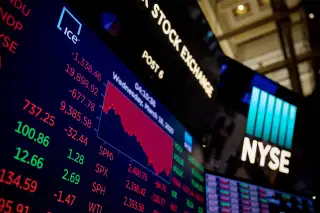Value Stocks Have Been Lagging Growth Stocks for Years. Here's Why You Should Own Them Anyway

It’s one of the most enduring stock market debates of all time: Value versus growth.
In recent years, though, it’s been a pretty one-sided bout.
A growth-oriented investing approach has walloped value for years, and in 2020 in particular, the referee might have to step in and stop the fight.
In the year’s first half, according to research shop Morningstar, the firm’s U.S. Growth Index is beating its U.S. Value Index by more than 33 percentage points – a 14.9% gain, versus an 18.5% decline. If things stay that way, it would be growth’s biggest rout since the heady days of 1999.
“Growth has been running up the score for years now,” says Dan Lefkovitz, a strategist on Morningstar’s index team. “The duration of the outperformance, and the magnitude in 2020, is pretty jaw-dropping.”
Over time, that divergence really adds up. Since May 1995 value stocks have returned 624%, while growth has gained 1,072%, according to analysis by UK wealth management firm Brewin Dolphin.
Broadly defined, a value approach is akin to bargain-hunting. Value investors are searching for stocks that, for whatever reason, are out of favor and offered at a reasonable valuation compared to future profits.
Meanwhile, growth stocks might look more expensive compared to current earnings, but their long-term business prospects justify a higher price tag. Think of a stock like Amazon (AMZN), which has always looked fairly pricey but continues to gobble up the world.
Historically, the stock market tends to cycle through extended periods of favoring one approach or the other. Hot economies tilt towards high-growth names, while recovery periods see investors gravitate towards the safety of value. As a classic example, the dot-com run-up in the late 1990s favored growth stocks, while the ensuing bust saw value stocks shine.
Value: Bloodied but not beaten?
So what about the current moment? Just think of the companies that are benefiting in this pandemic environment: Tech firms related to working from home, and cloud computing, and online shopping, all of which tend to have a growth profile.
Indeed, growth stocks have been ascendant for so long that observers might be tempted to write off value altogether, as a “broken” asset class, as Newport Beach, Calif.-based asset allocation firm Research Affiliates pointed out in a recent white paper.
That would be a mistake. It’s a classic example of what behavioral economists call “recency bias” or “availability bias”. We tend to think that whatever has happened in recent years will continue, because it is most vivid in our minds.
Meanwhile past periods – such as when value investing ruled the roost – become more remote in our memories, and so we discount the probability of them happening again.
“Humans tend to struggle with logic,” says Jonathan Treussard, a partner with Research Affiliates. “Investors fall in love with narrative, and they choose not to check the math. But eventually someone has to sell, often in a hurry, and that’s when the rubber meets the road.”
Indeed, for true contrarian investors, it is precisely when stocks are written off that they become an intriguing buy. In Research Affiliates’ study of broken asset classes, it found that 90% of them recover within five years. The average five-year return of such assets: A cumulative 80%, or 12% a year.
That observation might be cold comfort to value managers, many of whom have seen fund assets fleeing for the exits in recent years. But while the exact timing has yet to be determined, they will eventually be proven right that the performance gap between the two investing styles will narrow.
Some specific value names that look attractive right now, according to Morningstar screens: Financials like JPMorgan Chase, established tech like Intel and Cisco Systems, big pharma companies like Pfizer, and telecom like Verizon and AT&T.
One caveat about value investing: Sometimes stocks are on sale for good reason. Those are called “value traps” – enticing with a rock-bottom valuation, but trapping investors in companies that are in real existential crisis. So while a low price-to-earnings ratio is useful to consider, it should ideally be used in conjunction with other metrics like growing sales.
To be sure, it has been a depressing stretch for value investors, who take their inspiration from market legends like Benjamin Graham and Warren Buffett. It has been over 13 years that growth has outperformed, which for investors has seemed like many lifetimes.
But in recovery periods, especially – as seems likely for the years ahead – value has performed very nicely indeed. Across six recoveries studied by Research Affiliates, value outperformed the broader market in five – each time by double digits. For investors with strong stomachs, they can be reasonably sure that value will rise again.
“People always assume the past will continue, but market inflection points can be sudden and extreme,” says Morningstar’s Lefkovitz. “There is a lot of opportunity on the value side of the market right now – and these things tend to turn on a dime.”
More from Money:
What a Second Round of Coronavirus Lockdowns Would Mean for the Stock Market
How to Get Back on Track After Tapping Into Your 401(k) in a Financial Emergency